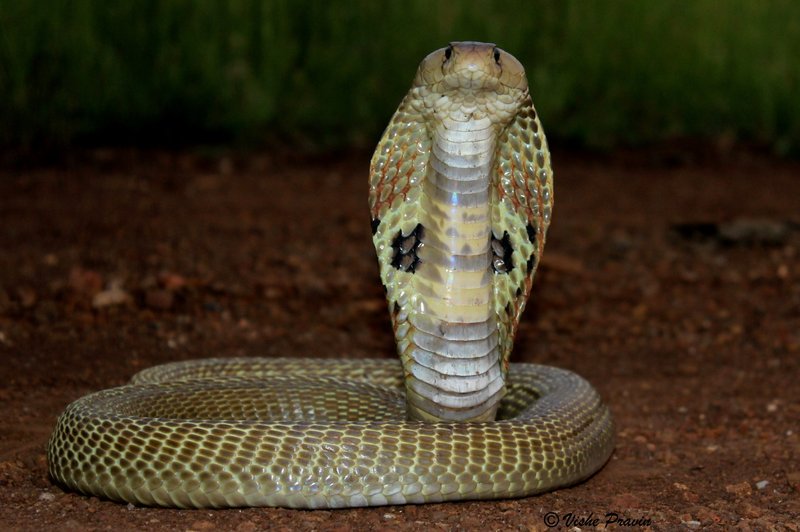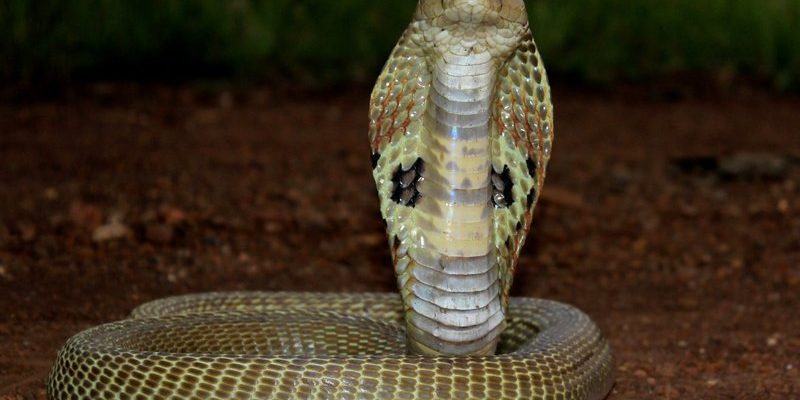
So, where exactly do these stunning reptiles roam? They mainly inhabit the diverse landscapes of the Indian subcontinent. From the dense forests of the Western Ghats to the dry plains of Rajasthan, their preferred environments are far more varied than you might expect. But it’s not just about being in nature; the Indian cobra also interacts with humans—sometimes leading to conflicts. Let’s delve into the habitats and distribution of these iconic snakes, so you can appreciate the intricate ecosystem they’re a part of.
Geographical Range of Indian Cobras
When it comes to geographical distribution, the Indian cobra (Naja naja) is primarily found throughout the Indian subcontinent. This includes countries like India, Pakistan, Bangladesh, Nepal, and Sri Lanka. You might think of India’s vast countryside, but these snakes also adapt remarkably well to urban areas. They can often be spotted slithering through the alleys of bustling cities or sunbathing on the warm pavements.
Interestingly, these snakes seem to favor certain regions over others. They thrive in areas like:
- Forests
- Grasslands
- Open fields
- Near water bodies
You might be wondering why they’re so versatile. The Indian cobra has adapted to various climates, from humid areas to semi-arid regions, making them a resilient species.
Preferred Habitats
Let’s break down the types of habitats these cobras prefer. Typically, Indian cobras enjoy locations that provide both shelter and a good supply of food. They are excellent at hiding, often found in burrows, rock crevices, or under logs and debris. This not only keeps them safe from predators but also helps them conserve moisture, which is crucial for their survival.
1. Forests: Dense forests offer ample prey like rodents and frogs. The cover also protects them from extreme weather.
2. Grasslands: These areas are usually rich in biodiversity. The open space allows for easy movement and hunting.
3. Near Water: You’ll often find Indian cobras close to lakes and rivers. The availability of aquatic prey is a big draw.
The versatility in habitat choices allows them to thrive in many ecosystems. Honestly, their adaptability is quite impressive!
Behavior and Daily Life
Now that we’ve covered where Indian cobras live, let’s talk about how they spend their days. These snakes are primarily crepuscular, meaning they are most active during dawn and dusk. This behavior helps them avoid the heat of midday and reduces the chances of running into humans.
During the day, they tend to stay hidden. They like to bask in the sun to regulate their body temperature, but they won’t stay too long in one spot. Here’s the thing: they’re not just passive creatures. Indian cobras are skilled hunters, using their keen senses to detect movement and track down their next meal, usually small mammals or birds.
They’re also known for their defensive behavior. When threatened, they can raise their hoods and hiss loudly, a display designed to intimidate potential predators. If that doesn’t work, they’re not afraid to deliver a venomous bite.
Human Interaction
Let’s face it, human interaction with wildlife can be a double-edged sword. Often, Indian cobras find themselves in direct contact with people—sometimes with dangerous results. Many cobras habitat areas overlap with agricultural land and urban settings, leading to conflicts. Farmers might see them as threats to livestock or crops, leading to unfortunate encounters.
Education is key here. Understanding their role in the ecosystem is crucial. They help control rodent populations, which can be beneficial for agriculture. When humans learn to coexist with these snakes, it can reduce the fear and misunderstanding surrounding them.
Additionally, many regions host festivals and rituals involving cobras, showcasing a cultural reverence for these creatures. Here, cobras are sometimes viewed as symbols of wisdom and strength. These positive interactions can help foster a better understanding and appreciation of their importance.
Conservation Status
While they’re often seen as a common species, Indian cobras face threats from habitat loss, poaching, and human-wildlife conflict. Urbanization is shrinking their natural habitats, putting pressure on their populations. You might be asking, “What can we do about it?” The answer lies in conservation efforts.
1. Protected Areas: Establishing wildlife reserves can help provide safe havens for Indian cobras.
2. Community Education: Teaching locals about the ecological importance of cobras can mitigate fear and promote coexistence.
3. Legal Protection: Enforcing laws against poaching and trafficking can help safeguard their populations.
Understanding the conservation status of Indian cobras is essential. By taking action, we can ensure that these majestic creatures continue to thrive in their natural habitats.
To wrap it up, the habitat and distribution of the Indian cobra are as fascinating as the snakes themselves. From the vibrant forests to bustling urban spaces, they’re more adaptable than you might think. Their day-to-day life, behavior, and interactions with humans all tell a complex story of survival and resilience.
Recognizing the importance of these snakes goes beyond mere curiosity. It’s about respecting their role in our shared ecosystems and working towards a future where humans and snakes can coexist harmoniously. So, the next time you hear about Indian cobras, remember the rich tapestry of their lives, and maybe even share this knowledge with someone else over coffee. After all, understanding these incredible creatures is the first step toward protecting them.

